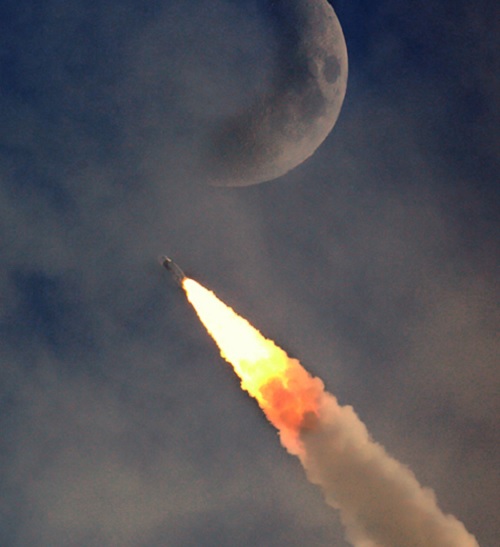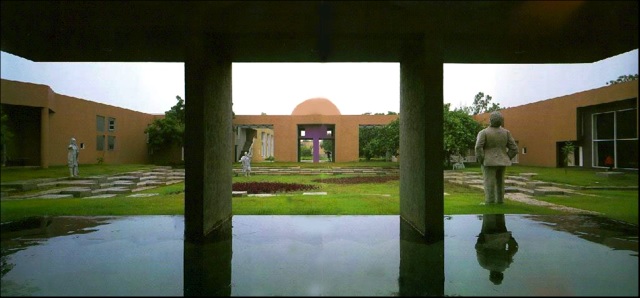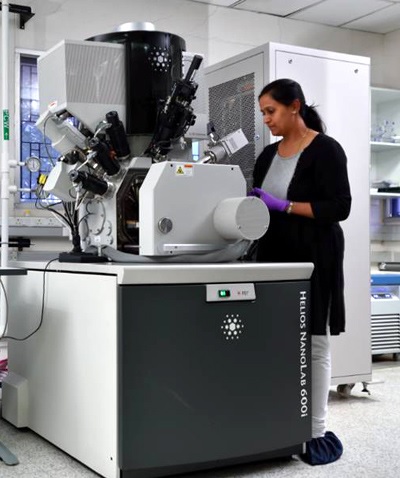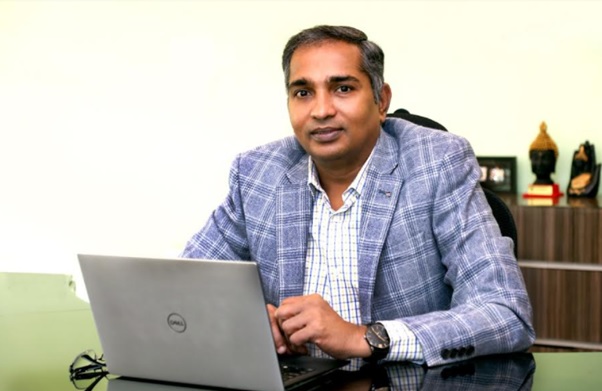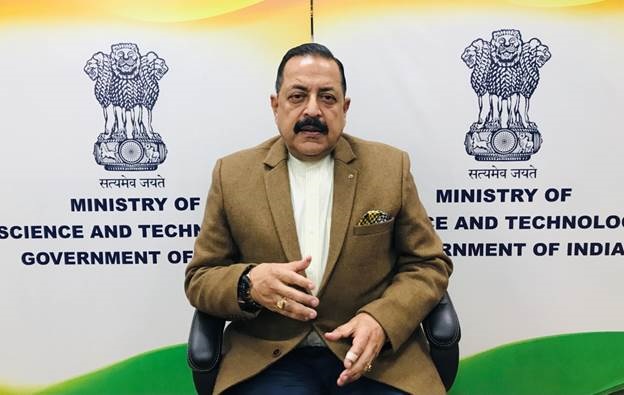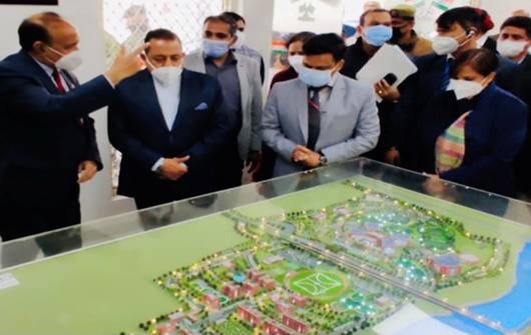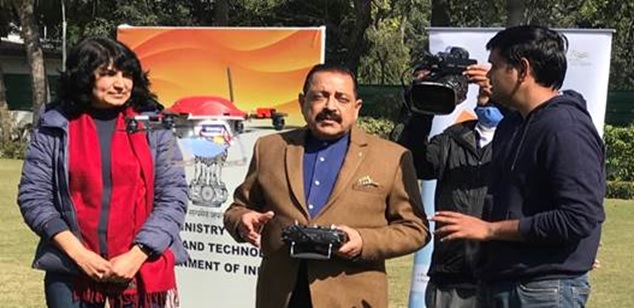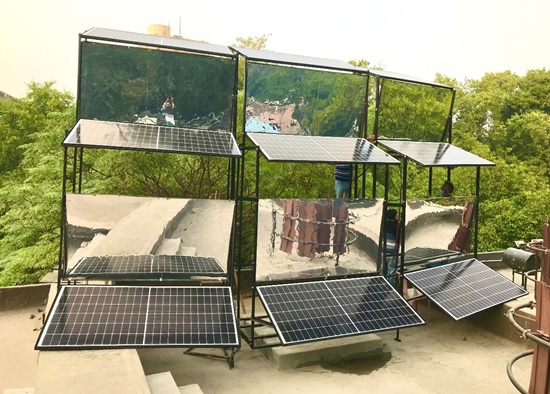
Non-mechanical tracking solar PV tower of capacity 4 kW with reflection concentration installed at IIT Delhi
Researchers at the Indian Insitute of Technology (IIT), Delhi have developed a high efficiency, shadow-less (solar panels at bottom are not shadowed by the top panels) and auto-rotating Solar PV tower for photovoltaic power generation in a given area throughout the day.
The new ‘non-mechanical’ and ‘mechanical’ tracking solar PV towers with reflection concentration are viable for all Indian seasons of the year with high energy density (energy per footprint area, kWh/m2). Moreover, the ‘mechanical’ tracking solar PV tower is portable i.e. the entire unit can be mounted on a truck, made functional, and taken anywhere to generate power.
The space-saving ‘non-mechanical’ and ‘mechanical’ tracking solar PV towers of 3kW and 5kW capacity, developed by the IIT Delhi research team led by Physicist Prof. Dalip Singh Mehta, are scalable to higher capacity with the concept of solar tower array (green energy field).
TThese solar pv towers are useful for electric vehicle charging stations, rooftop high-efficiency solar power generation for independent houses/ Schools/ Hospitals/ Shops/ Telecom Towers/the IT sector and more. Vehicle-mounted solar towers with solar tracking for power generation can be utilized for agriculture purposes (Agri-photovoltaics) such as solar water pumping, charging the battery for tractors, etc.
Researchers at the Indian Insitute of Technology (IIT), Delhi have developed a high efficiency, shadow-less (solar panels at bottom are not shadowed by the top panels) and auto-rotating Solar PV tower for photovoltaic power generation in a given area throughout the day.
Both the systems are patented by IIT Delhi and licensed to Banglore and Mumbai-based EP Sunsol Private Limited for commercial installation. EP Sunsol has already deployed the developed systems at Chennai, IIT Delhi, and Navi Mumbai of 3kW, 4kW and 5kW, respectively.
“After intensive research, we got success in arriving at the light weight and cost-effective novel design on mounting Solar PV towers along with high reflectivity mirrors to follow the Sun movement. Both non-mechanical and mechanical solar towers are able to generate 20-25% and 25-30% more power respectively, while utilizing only 50-60% roof top space compare to conventional solutions,” Prof. Dalip Singh Mehta, Physics Department, IIT Delhi said.
Non-mechanical tracking solar tower: The solar panels along with high reflectivity mirrors are vertically mounted in a particular way (based on location/city) that they fall in the line-of-sight of the Sun during the morning, mid-day, and evening hours, hence leading to high-efficiency solar power generation. The mounting methodology helps to generate more power during non-peak hours of the Sun i.e. 9 a.m. to 11 a.m. and 2 p.m. to 5 p.m. in addition to peak hours from 11 p.m. to 2 p.m.
The mirrors/reflectors deployed in this solution boost the irradiance on solar panels during the entire day i.e., 8 a.m. - 5 p.m. The percentage of increase of solar irradiance onto the solar panels is more than 50% thus maintaining 1000 W/m2 from 9 a.m. - 4 p.m. Due to this increase in solar irradiance from 9 a.m. - 4 p.m. the increase in amount of power generated is 20-25 % compared to conventional mounting of solar panels.
Mechanical tracking solar tower: The solar PV tower with reflectors has a low-cost programmable electro-mechanical system to rotate the solar tower horizontally. Single / double towers are mounted in such a mechanism where the whole system with panels and reflectors follows the direction of the Sun. The panels start the day facing East direction and end the day facing west direction. By the next morning, the panels return to their East facing position to start a new day. The innovative tracking system developed by IIT Delhi does not require any LDR sensors, requires only single-axis tracking and consumes very low power drawn by the same solar tower.
Along with Prof. Dalip Singh Mehta, Dr. Mayank Gupta, Mr Virendra Kumar (Department of Physics); Mr Masood Ali (SeNSE) and Mr Sanjay Ambwani (Design Department) were part of the IIT Delhi research team. The EP Sunsol Team, which did the installation comprised of Mahadevan R and Dr. Hitesh Mehta.
India Science Wire
ISW/USM/IIT Delhi/Solar Energy/Eng/04/02/2022
